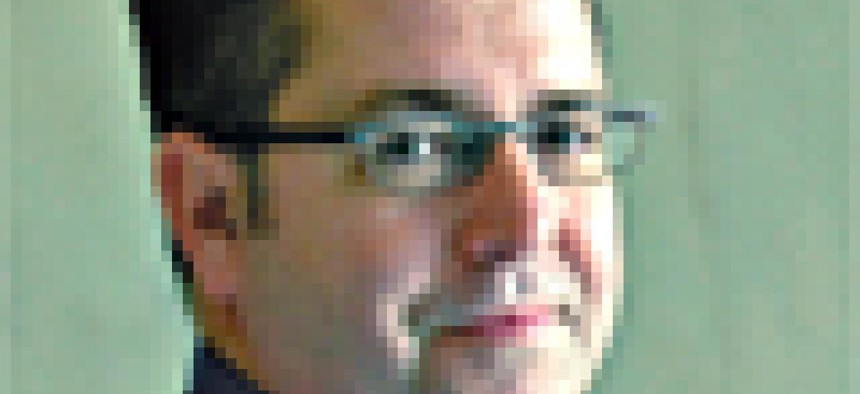Governors Look to Ease Limits on Fed IT Funds

The nation's governors, hoping to gain greater control over their information technology projects, want the federal government to ease restrictions on grants and other aid provided to the states for IT projects.
By William Welsh, Staff WriterThe nation's governors, hoping to gain greater control over their information technology projects, want the federal government to ease restrictions on grants and other aid provided to the states for IT projects. The governors contend that various constraints on how states use federal funds can frustrate efforts to deliver electronic services to citizens and to integrate systems across agency lines, said Thom Rubel, NGA's program director for state information technology."Federal funding restrictions impede state options, and often explicitly require predetermined solutions, as funds are passed to states to implement state-run federal programs," Rubel said.The governors will take up the issue when they assemble Feb. 24-27 in Washington for the winter meeting of the National Governors' Association, a bipartisan organization representing the nation's governors. In July 2000, NGA Chairman and Maryland Gov. Parris Glendening appointed a nine-member e-Governance Task Force to examine public financing of IT solutions and other issues. Kentucky Gov. Paul Patton and Wyoming Gov. Jim Geringer lead the task force, which will convene for its first session at the winter meeting. The NGA may approach Congress or the Bush administration with requests to reform federal rules on how states are allowed to spend federal funds on state-run programs, said Rubel and other observers. "The governors are the only people who can do something about it," said Carol Kelly, vice president and director of e-government strategies for Meta Group, Stamford, Conn. Kelly said the governors should meet with Bush administration cabinet secretaries to get relief from funding rules that limit states' ability to establish integrated programs. The federal government provides hundreds of millions of dollars annually in aid to state and local governments for IT related projects in areas such as education, social services, public safety and transportation. Federal IT grants to states generally are accompanied by rules and restrictions that limit their use to the purchase of specific technology within a program. They do not allow the funds to be used for integration of technology across two or more programs, said Ray Bjorklund, senior vice president of consulting services at market research firm Federal Sources Inc., McLean Va.The existing situation may worsen if grant spending increases under the Bush administration, Bjorklund said.State agencies without large IT budgets or strong support of a governor or a chief information officer rely heavily on federal grant money, he said. Although federal officials realize there should be more integrated spending at the state level, they haven't figured out how to orchestrate grant administration to achieve that result, he said."People have griped to the feds about this before," said Bjorklund.A related issue the task force will address is the fragmentation of state budgeting that inhibits enterprisewide approaches to electronic government, said Rubel.At the state level, Hawaii Gov. Benjamin Cayetano's effort to assemble IT funds from individual agencies into a central, unified IT account may serve as an example to other governors considering steps to unify state IT budgets. Cayetano's proposed biennial budget for 2001-2003 includes $49 million for IT upgrades for all state agencies, said Kim Murakawa, Cayetano's press secretary. Consequently, spending on computer system upgrades will be centrally coordinated to ensure integration and compatibility among the agencies' different systems. Under the arrangement, agencies would retain control over funds related to IT operations and maintenance, she said.This approach "is typical of the direction in which the governors want to go," Rubel said. A close examination of the unified IT budget that Cayetano has proposed could show where there is program overlap among agencies, said Sharon Dawes, director of the Center for Technology in Government, Albany, N.Y. The center conducts applied research and partnership projects on policy, management and technology issues surrounding information use in the public sector. "It might make a difference in the [programs] the state has control over, and help Hawaii see where it has crossovers," Dawes said, but she warned that federal agencies still might not agree to let the state mingle grant funds. In December 2000, NGA staff met with 15 people from organizations representing state executive branch officials, Rubel said. The NGA has formed an alliance with these organizations that will support IT spending reform and other efforts."We wanted to open up the lines of communication with these organizations because they are all doing some kind of substantial IT work that involves interacting with citizens," he said.Like private companies before them, state governments are unearthing a lot of unrelated but promising Internet activity and trying to standardize and integrate it, said Jeremy Sharrard, e-gov analyst with the research firm Forrester Research, Cambridge, Mass.What the NGA is trying to do is bring agency officials together to talk about how to use the Internet and apply best practices governmentwide, Sharrard said. The innovation going on with e-gov mirrors what is going on in the private sector, according to Sharrard.


Thom Rubel
NEXT STORY: MARKET WATCH